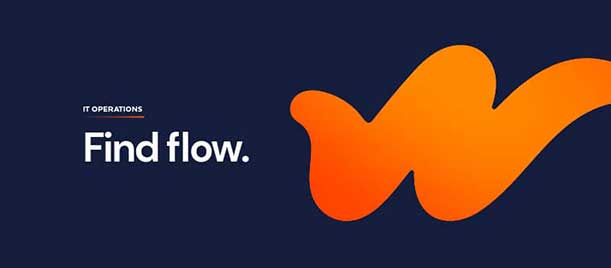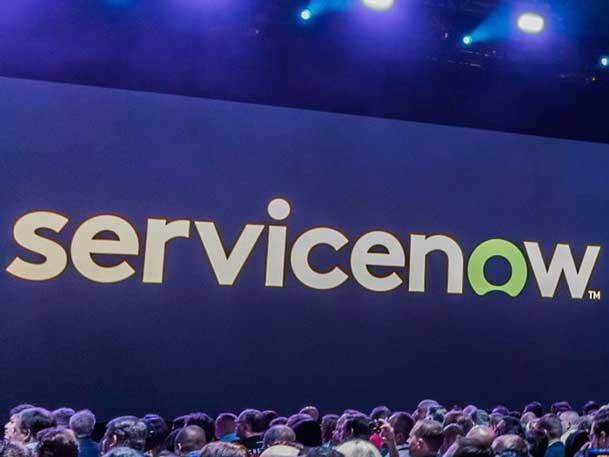How ServiceNow Elite Partner Windward Consulting Moved To The Next Level
‘We have developed an overall service reliability strategy which is really made up of three components. Think of as like three legs of a stool. One is service management. The second one is operations management. And the third one is SecOps (security operations). So we’re able to deliver a fully integrated solution powered by ServiceNow across all three areas,’ says Sean McDermott, Windward Consulting CEO.

Windward Consulting Group, which provides IT operations and IT services management, as of this month has moved to the next level with the development of the company’s new Service Reliability offering powered by ServiceNow.
Windward Consulting last year became a ServiceNow elite partner, the highest level of partner for the Santa Clara, Calif.-based vendor.
Windward Consulting’s new Service Reliability offering is a big move for the company, said Sean McDermott, CEO of the Herndon, Va.-based solution provider.
[Related: ServiceNow CEO Bill McDermott: ‘We’re In A Market Of One’ ]
McDermott, who told CRN that he is not related to ServiceNow CEO Bill McDermott unless it is a branch of some family tree going way back, said he started Windward Consulting 26 years ago and has gone through every stage of what it means to be a solution provider until now ServiceNow forms the bulk of its business.
The new offering is an overall service reliability strategy made up of three components, similar to the three legs of a stool, McDermott said.
“One is service management,” he said. “The second is operations management. And the third is SecOps (security operations). So we’re able to deliver a fully integrated solution powered by ServiceNow across all three areas to ensure that when companies start thinking about reliability, the know they can get there primarily through leveraging their investments in ServiceNow.”
For more details on the new offering, and on what Windward Consulting has planned for upcoming ServiceNow-related services, click through our slideshow.

How do you define Windward Consulting?
Windward is primarily a national consultancy that focuses on what we call service reliability. So management consulting in strategy to help companies develop their service reliability strategies, and then implementation. So about 30 percent of our work is strategy and the rest is implementation. So we do that on purpose, because we want to ensure that when we’re helping a customer with a long-range, three-year or five-year plan, we have all the expertise on staff that have actually done it. It’s core to our strategy.
How big is your company?
We’re about 125 people. I’d rather not say revenue.
Windward Consulting is making a big move with ServiceNow. What’s the news?
We’re talking about our service reliability offering powered by ServiceNow. We have developed an overall service reliability strategy which is really made up of three components. Think of as like three legs of a stool. One is service management. The second is operations management. And the third is SecOps (security operations). So we’re able to deliver a fully integrated solution powered by ServiceNow across all three areas to ensure that when companies start thinking about reliability, the know they can get there primarily through leveraging their investments in ServiceNow.
How much of your company’s own intellectual property is involved in this new solution versus what you’re getting from ServiceNow?
The whole platform is based on ServiceNow. It’s an integrated solution around ITSM (IT service management), ITOM (IT operations management), SecOps, a number of other modules in there too, like CMDB (configuration management database), asset management, configuration management SPM (strategic portfolio management), and overall control PPM (project portfolio management). Our offering’s whole foundation is based on all those products integrated together into a single cohesive solution. Our intellectual property is kind of the glue that puts it all together, as well the dashboards and analytics and things like that.

So what unique capabilities does Windward bring to this overall solution?
To understand that, you have to understand why we actually are out there pushing it. So when we talk about service reliability, the simplest way I tell our customers is, everyone’s talking about digital transformation right now, and have been for a while, right? But the reality is that everyone’s digital transformation is different. And I’m a very simple guy. So I basically try to break things down in the simplest components. And to me, a successful digital transformation strategy or initiative is really driven by innovation and reliability. So if you’re not innovating, and you’re not transforming anything, if it’s not reliable, then all the investments that you’re actually making are really going to kind of fall flat on your face, because if you build a cool mobile application for your distribution networks, but people can’t get to it, it doesn’t respond, or it slows or crashes, things like that, then it just doesn’t matter. And one of the things that we’ve really pushed is, IT traditionally gets really excited about building things, and not so excited about operating things.
We’re really trying to elevate reliability as a core component of digital transformation. We’ve got 26 years of doing this. This is all we’ve done. We built the first NOCs (network operation centers) in the United States. Eighty 80 percent of internet traffic ran across NOCs that we built for Bell South and Ameritech. But we’ve gone through this kind of maturation of continuing to develop and build reliability capabilities from monitoring, observability, CMDB. What’s interesting today is, IT has gotten so much more complex, and the idea of reliability has gotten more complex. But ServiceNow is really the first company that I’ve seen, since I’ve been in this industry for 35 years, that is coming to the table with a fully integrated platform. Because if you go back into the early days of BMC and CA (Computer Associates) and HP (Hewlett Packard), they had all these great technologies. They didn’t have everything integrated. The reality is that everything underneath was basically an acquisition. And it was a total disaster to actually implement. ServiceNow is the first company to do so. What’s interesting is that we’re still doing the same thing that we’ve been doing for 25 years. And ServiceNow has actually met us where we are. … We now have this very unique opportunity to go to market and deliver a whole service reliability capability primarily through a single vendor. There’s always going to be other companies like Splunk and Dynatrace and so on collecting massive amounts of data. But we have partnerships with Splunk and Dynatrace, too. And we know all these technologies that that all embed and feed into the ServiceNow ecosystem. So we’re in a very unique position on how to deliver service reliability when most of the other partners are kind of general ServiceNow people.

What’s the next big area you want to focus on with ServiceNow?
We’re going to be focusing a lot on process optimization and workflow optimization. We feel that’s a really big area for our customer base, because they deploy a lot of these workflows and then kind of walk away from them and start on something new. But that can drive a fair amount of efficiency. I think one of the things that we’re seeing in the market today, especially at this point in time, is companies starting to pull back because of the recession or possible recession or whatever we’re in right now. We saw these cycles in 2008 in 2002. I’ve seen all these cycles before. They start pulling back and start looking for efficiencies, right? And they start saying, ‘How can we do more or less? How do we free staffing? How do we maybe reduce staffing? How do we do that?’ Because operational budgets get cut. So we feel that driving into the efficiency side of operations through process optimization and workflow optimization is going to be really key for us going forward for probably the next couple years.

Can you give an example of a typical customer or a kind of customer that you think your new reliability offering would be targeted at? What they would actually do with it?
We’re working now with a very large energy company, a Fortune 150 company that has ServiceNow. We’re working with them to deploy SecOps. The interesting thing about SecOps is when you start looking at incident response and vulnerability management, security incident response is very similar to operations monitoring observability. They’re actually using Splunk, and bringing all this telemetry and data into ServiceNow. They’re using it for tickets on the IT operations side. We’re going to be bringing that into the security side. We’re also going to be integrating and updating the CMDB with security scanning data to make the CMDB more accurate, which is going to help the operations team, which is going to help the security operations team. The reality is, these things are all interconnected. And unfortunately, we see a lot of the market looking at everything siloed. ‘Well, I got ITSM running, so let’s get ITOM running.’ And then you got another team saying, ‘Well, we want to get SecOps going.’ But the reality is, because you’re now on a centralized platform, you have this ability to create a lot of interconnectivity of data and workflows across silos.
And that’s where we really play well. The silos are very different from customer to customer. How they do their work is actually very different. So that’s a really good example of us working with the customer and saying, ‘Look, you want to be able to expand ServiceNow and leverage your investment and drive additional value. But you also got to be able to do it in a way that breaks down organizational silos, drives efficiency across organizations, and allows better collaboration and communication between teams.’ The reality is, everything is kind of blurred now. So if you’re having an outage or some type of service degradation, you it may be a database that’s not working, or it could be a vulnerability that’s being exploited. You just don’t know. So being able to centralize all the data and create collaboration is where they’re going to see massive amounts of value realization.